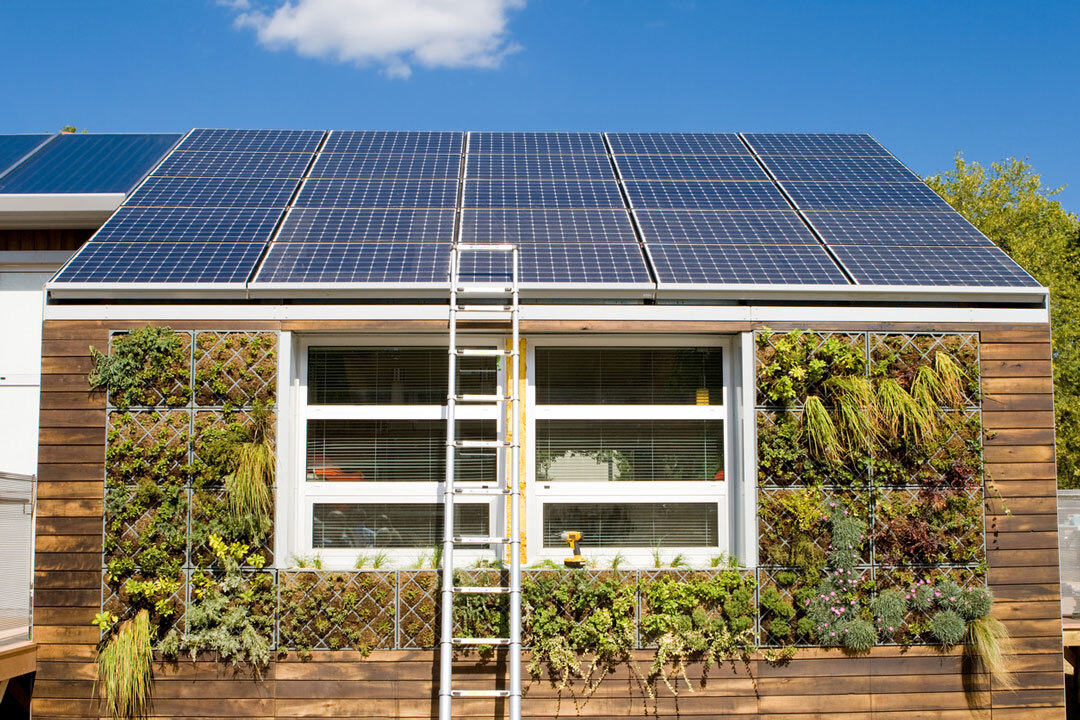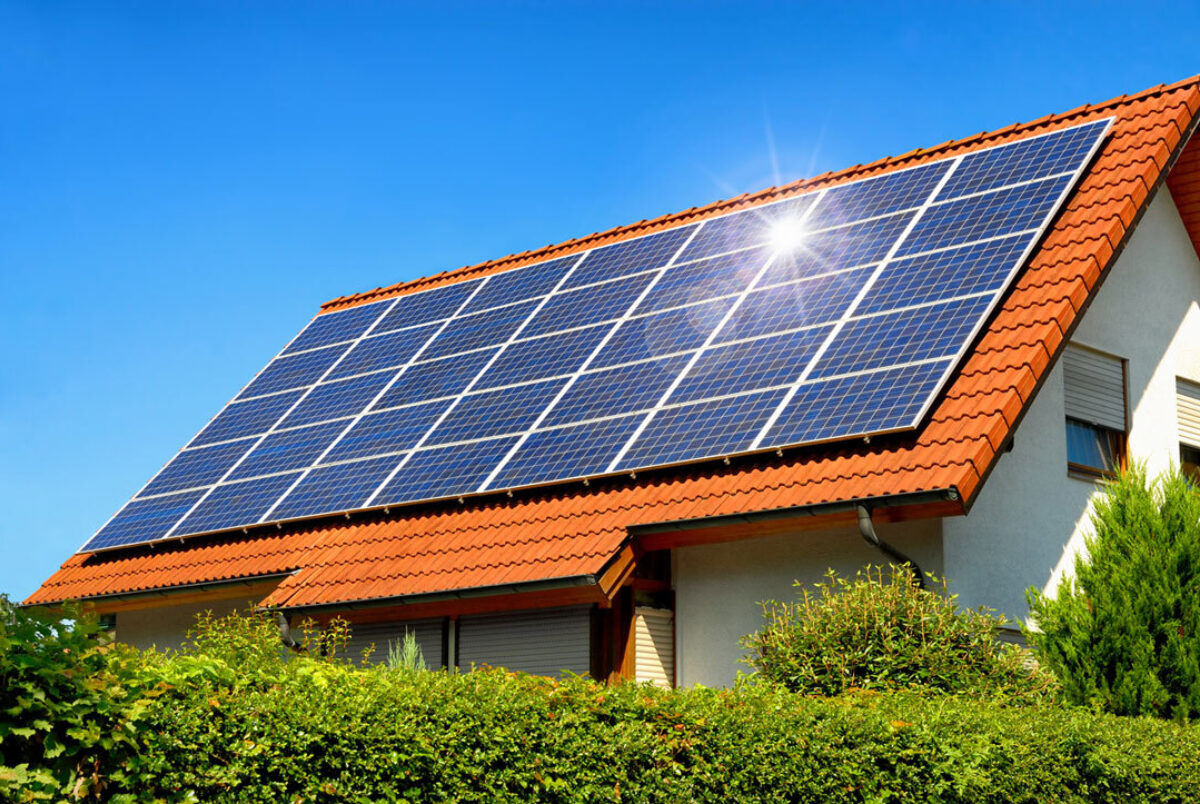Transitioning to an off-grid power system can be a great decision for many homeowners, especially if you live in a remote area, as well as RV enthusiasts. These systems enable you to become completely energy independent, allowing you more control of your day-to-day life. If you own a home, this means you won’t experience the increasingly common power outages that homes connected to the grid do. Additionally, you won’t have to pay cost hikes that electricity companies can charge. Being completely energy independent does come with more responsibility though. When you are on a grid-tied system, you can purchase more power in the event that you need it, whereas off-grid users must calculate their energy usage before installation, to ensure they will produce and store enough energy for the home to function properly.
Making the switch to off-grid can help you make the most out of your energy system and reduce your carbon footprint, but there are a few things you should know before making the switch.
- Be prepared and familiar with all of the components needed for an off-grid system.
- Decide what type of battery storage system is best suited for your needs.
- Calculate your energy use and production needs.
- Understand the other financial and logistical benefits you’ll receive by transitioning to a fully off-grid lifestyle.
#1: Components Needed
For most direct current-coupled off-grid systems, it really comes down to four main components – solar panels, charger controller, inverter, and the battery bank. When it comes to the solar panels, keep in mind that there are two types: monocrystalline, or black solar panels made up of single crystals; and polycrystalline, or blue solar panels made up of many silicon crystals. Overall, polycrystalline panels are more affordable, but monocrystalline panels are more efficient. Additionally, the panels can be mounted either on a roof, on a pole, or on the ground. When mounted, it’s important to note that the solar panels should face south for maximum energy production and should not be surrounded by trees or other structures that obstruct direct sunlight.
Charge controllers are devices that regulate the energy flow from the solar panels to the battery. These are important because they keep solar batteries from overcharging during the day and from draining back into the panels at night. There are two types of charge controllers: Pulse Width Modulation (PWM) and Maximum Power Point Tracking (MPPT). In PWM charge controllers, there is a continuous and direct connection between the panels and the battery bank, so the nominal voltage of the solar array must match the voltage of the battery bank. Put simply, a 12V solar panel can charge a 12V battery, or a 24V solar panel can charge two 12V batteries. In the case of MPPT charge controllers, they down-convert the voltage from the panel to match the battery voltage. With MPPT charge controllers, a 20V panel can charge a 12V battery, opening up the variety of solar panels that can be used in an off-grid system.
Inverters in off-grid systems are typically battery-based inverters that convert the direct current (DC) power to alternating current (AC) power. By doing this, the power can be used in the same manner as plugging AC power into an outlet in a home. Inverters come in a wide variety of capacities and users should factor in whether the inverter can handle all of the loads running simultaneously in the system.
Batteries are also an essential component of any off-grid power system. In DC-coupled off-grid systems, the solar panels or solar arrays connect directly to the battery. The most common batteries are lead-acid batteries and lithium batteries. The differences between these batteries will be covered in the section below.

#2: Decide What Type of Battery Storage System You Need
Quality batteries are essential to an efficient and well-functioning off-grid power system, so deciding which energy storage system to invest in is a big decision. The two most popular types of batteries are lead-acid and lithium. There is a misconception that lead-acid batteries are less expensive than lithium batteries due to their lower upfront price points. However, when you factor in data points like their usable capacity and lifespan, among other considerations, lithium solar batteries are almost always more cost-effective in the long run. Lithium batteries require less maintenance too, further reducing cost over their lifespan.

There is a variety of compositions of lithium batteries, including lithium iron phosphate, lithium cobalt oxide, and lithium nickel manganese cobalt oxide. Lithium cobalt-based batteries are prone to thermal runaway and fire. To protect users from this, lithium cobalt-based batteries require additional cooling systems, which impacts the total cost of energy. This is part of the reason why RELiON offers lithium iron phosphate batteries; they are extremely safe, very lightweight, and need little to no maintenance.
In considering which battery to install, you should also consider the depth of discharge, round trip efficiency, and cycle life, as all of these factors into what is called the Levelized cost, or the actual cost of the storage system once the upfront price point and relevant data points are assessed together.
Depth of discharge relates to how much energy you can use before needing to recharge your battery. Lead-acid batteries can’t typically be discharged more than 30 to 50 percent of their capacity at a time, compared to lithium batteries, which can be discharged to nearly 100 percent of their total rated capacity.
Roundtrip efficiency is the ratio of how much energy goes into the battery versus how much energy comes out. With any power system, there are inefficiencies that cause some energy loss, but the total is generally much lower for lithium batteries, further contributing to their increased usable capacity.
Finally, cycle life is important to factor in as well. Cycle life is the number of charges and discharges you can get out of a battery over its entire lifespan. Factoring in that you receive a near full discharge with lithium, and you lose less energy during charging and discharging, lithium batteries provide users more bang for their buck and are a great investment to ensure users get the most out of their off-grid system.
Other differences are also important when deciding between lithium and lead-acid batteries. There are significant weight differences, with lead-acid batteries being much larger and heavier, sometimes by more than double. Certain types of lead-acid batteries, like gel and, flooded, also must be stored in a ventilated compartment for safety concerns, so that the hydrogen gas doesn’t build up. If not stored properly, these batteries may pollute the air and, in the most severe circumstances, cause an explosion. To learn more about how to calculate your energy needs and find the optimal battery for your application and usage, visit our Lithium Battery Selector Tool.
#3: Calculate your energy Use and Production Needs
The first step in investing in an off-grid system is also the most important - calculating how much power you use and will need in the future can save you countless headaches down the road. Being off-grid means you are independently responsible for your own power supply. When you are on-grid and don’t have enough power, you can purchase more from the utility company. When you are off-grid and don’t have enough power, it’s a different story. Therefore, it's safer to overestimate, rather than underestimate, your energy needs when it comes to off-grid systems. It’s a good idea to add 20 to 30 percent more solar panels and battery storage than you think you will use to any off-grid system. Correctly calculating your energy production needs in advance can save you from unexpectedly realizing down the line that you need to resize and expand your system. In case you do find yourself needing to expand in the future, it’s best to use larger wires when building, if possible. They can better adapt to adding capacity or upgrading for unanticipated needs.
Energy-efficient appliances will also help you get the most out of your off-grid system. Other practices can help you produce more energy too, like cleaning the panels often to prevent potential energy loss.
#4: Off-Grid Power System Financial and Other Benefits
In addition to the intangible benefit of greater independence and not relying on a utility, there are also substantial financial benefits of self-reliance. Compared to on-grid systems, off-grid users can save between $10,000 and 30,000 over the lifespan of the system. Off-grid users are also not subject to price hikes or surges that utility companies may implement. Further, during severe weather, off-grid systems do not experience the same outages as on-grid, so users are better equipped to deal with storms, providing energy resiliency and peace of mind. Over the last two decades, power outages due to severe weather have doubled in frequency, making resiliency one of the largest drivers for off-grid solar-plus-storage adopters. As severe weather occurs more often now, more on-grid users will face outages during emergencies.
Going off-grid can be intimidating, but it shouldn’t be. Taking the right precautions, enlisting help with calculations, and having confidence in your equipment are all key steps in making sure your off-grid power system works for you. There are so many benefits to going off-grid, financially, logistically, and environmentally. If you need assistance with setting up your off-grid power system, contact a member of our team today and we will be happy to help you.
